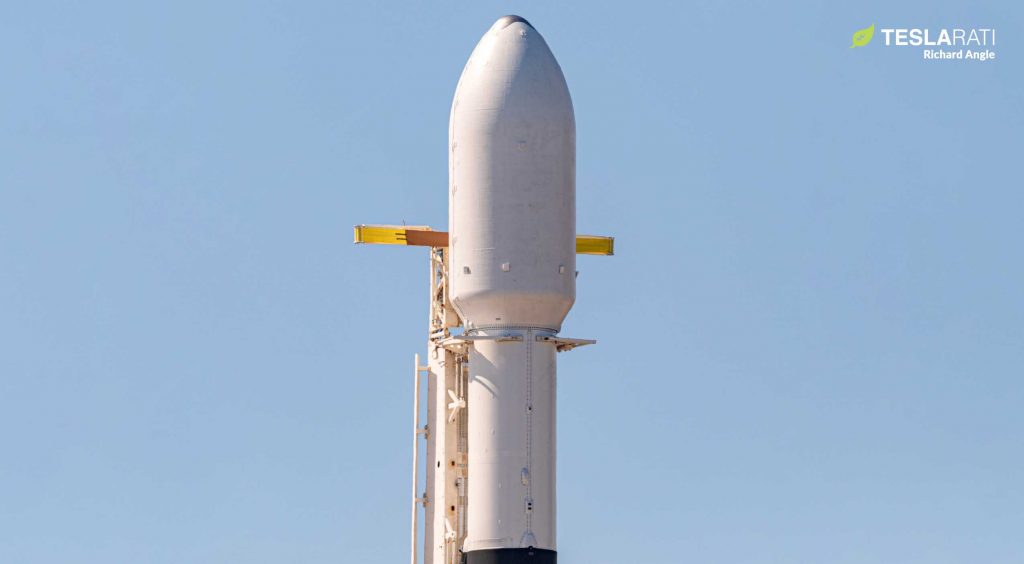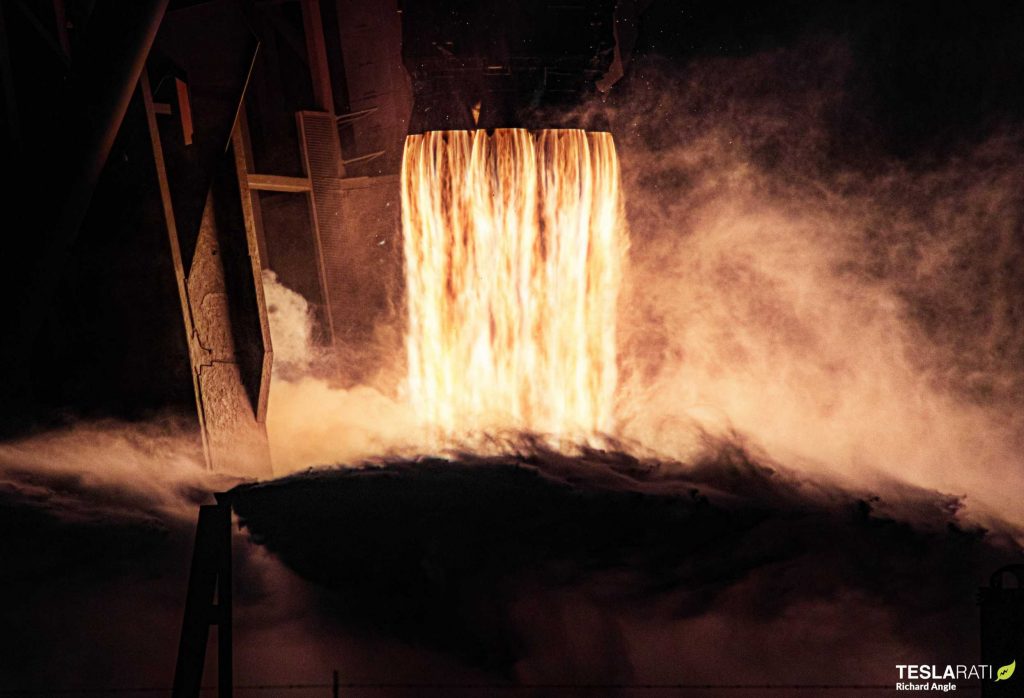One of SpaceX’s first upgraded Falcon 9 Block 5 boosters is ready for its second attempt to set a reusability record after its March 15th Starlink launch attempt aborted at the very last second.
Now scheduled to send SpaceX’s sixth batch of 60 Starlink satellites into orbit no earlier than (NET) 8:16 am EDT (12:16 UTC), March 18th, the mission will be Falcon 9 booster B1048’s fifth. Just four months ago, the booster successfully launched the first 60 upgraded Starlink v1.0 satellites, also becoming the second SpaceX rocket to fly four times. While B1049 – B1048’s predecessor – was first to reach the four-flight milestone in May 2019, B1048 is now on track to take the next leap forward for Falcon 9 reusability.
First noted shortly after the abort on SpaceX’s March 15th launch webcast, the company later clarified that what could have been attributed to hardware failure was likely just an issue with software or sensors. Milliseconds before liftoff, Falcon 9’s autonomous flight computer seemingly didn’t like what it saw while interpreting the telemetry flowing in from the ignition of B1048’s nine Merlin 1D engines. Whatever the specific trouble, Falcon 9 believed that one or several of those Merlin 1D engines were producing more thrust than they should.

While likely oversimplifying what is a spectacularly complex logic system, the flight computers that control Falcon launch vehicles from T-1 minute to mission completion have to treat the messy uncertainty of reality through a black and white lens. Lacking the ability to heuristically interpret the data they process, the computers instead rely on algorithms that filter thousands of channels of telemetry into a handful of simple categories. If that data aligns with the computer’s expectations, things are okay. If the data doesn’t agree with the plan, things are not okay. There are, of course, many more levels of complexity, but the concept of operations remains mostly the same.
However, the telemetry itself is also a potential point of failure – bad data could lead the flight computer astray, concluding that things are okay when they aren’t or vice versa. To handle that potential failure mode, SpaceX relies on multiple strings of telemetry (and even multiple computers), all gathering and analyzing the same things simultaneously. If one of several redundant sensors starts to disagree with its brethren, reporting different data back to Falcon 9’s flight computers, it’s apparent that the sensor – not the thing it’s measuring – is likely at fault. Still, out of an abundance of caution, SpaceX avionics typically treat most “out-of-family” sensor readings as reason enough to delay or fully abort a launch. When a launch delay can be little more than an annoyance with a negligible cost, it’s almost universally better to be safe than sorry.


With Falcon 9 B1048’s March 15th false start, the rocket’s computer appears to have received conflicting readings from the same family (or families) of engine thrust sensors. While, as noted above, the fault almost certainly lay in an engine sensor or two and not in the engines themselves, the flight computer chose caution over expedience and halted the launch milliseconds before it would have otherwise commanded clamp release and lifted off.
Confirmed by SpaceX delaying the Starlink V1 L5 mission by just three days, the issue was almost certainly software or sensor-related. Given that SpaceX continues to push the envelope of launch vehicle reusability, it’s honestly more surprising that aborts like these aren’t more common. Instead, the reality is that Falcon 9 Block 5 – aside from delays from the occasional upper stage fault – almost never suffers hardware-related aborts when compared to the rocket’s prior iterations.


Featuring the second-ever flight-proven Falcon payload fairing, Falcon 9 B1048 will hopefully become the first SpaceX rocket to complete five orbital-class launches and landings. With more than a little luck, there’s also a smaller chance that the mission could mark the first time SpaceX successfully catches both fairing halves with twin ships Ms. Tree and Ms. Chief.
Tune in for SpaceX’s second Starlink V1 L5 launch attempt around 8am EDT (12:00 UTC) to catch the potentially record-breaking launch and landing live.
Check out Teslarati’s newsletters for prompt updates, on-the-ground perspectives, and unique glimpses of SpaceX’s rocket launch and recovery processes.

(adsbygoogle = window.adsbygoogle || []).push({});
<!–
–>
var disqus_shortname = «teslarati»;
var disqus_title = «SpaceX rocket ready for second reusability record, Starlink launch attempt»;
var disqus_url = «https://www.teslarati.com/spacex-rocket-reusability-record-starlink-launch-attempt/»;
var disqus_identifier = «teslarati-133630»;

